FREQUENTLY ASKED QUESTIONS
FREQUENTLY ASKED QUESTIONS
Here are some of our clients’ frequently asked questions.

Industrial hemp is a crop belonging to the cannabis sativa family. It is a small-seeded, dicot, dioecious, photoperiodic plant. That is to say, it is a broadleaf plant and not a grass. It is a species of Cannabis Sativa plant whose by-products serve numerous industrial uses. We can refine it into a plethora of commercial items including textiles, paper, clothing, paint, insulation, biodegradable plastics, food, and animal feed.
No. Both industrial hemp and marijuana are varieties of the cannabis sativa plant. However, hemp is a variety that has low levels of THC and causes no psychoactive behaviour in the body. The prime use of marijuana is as a recreational drug, but hemp has no such use.
No. The psychoactive behaviour in the human brain is caused by a cannabinoid called THC. Marijuana contains large amounts, but industrial hemp contains minimal amounts of THC. The consumption of hemp does not cause any excitant behaviour or psychoactive actions.
Typically, industrial hemp grows in the northern hemisphere. Some countries that actively grow it are Australia, Canada, Austria, China, Chile, Denmark, France, Germany, Finland, Egypt, Great Britain, India, Italy, Japan, Hungary, Korea, New Zealand, Netherlands, Romania, Russia, Poland, Portugal, Slovenia, Sweden, Thailand, Switzerland, Ukraine, and Turkey.
Typically, growing hemp is free of pesticides and any other chemical fertilisers. Industrial hemp is a crop that requires minimal to zero amount of chemicals. It grows naturally in organic conditions and is healthy in that sense.
Industrial hemp and marijuana, although varieties of the same species of plant, differ on multiple levels.
Chemical Composition
The prime cannabinoid present in hemp is CBD, whereas that in marijuana is THC. This is the reason that marijuana causes extreme excitant behaviour in the body, whereas hemp has no such effects.
Appearance
Both marijuana and hemp are broad-leafed plants. However, marijuana leaves are skinnierer than hemp leaves and have a tight bud. Marijuana grows as a fat bush, whereas hemp grows skinnier and taller.
Cultivation Environment
The cultivation environments for industrial hemp and marijuana are contrastingly different. Marijuana needs a carefully controlled, warm, and humid atmosphere, whereas hemp can grow in a relatively freer cultivation environment.
Marijuana and hemp plants are never grown together. This is because hemp pollen can considerably dilute the psych activity of marijuana.
Uses
Marijuana is primarily a recreational drug. Hemp, on the other hand, has multiple uses across various industries. Hemp was one of the first plants used to make fibre and the hemp fibre industry is huge. Industrial uses of hemp include use in construction as a building material, insulation, as biodegradable plastic, paint etc. Hemp’s use as a food item is continuously increasing owing to its high nutritional value. Extracts of hemp oil are becoming a popular ingredient in beauty and skincare products.
Organic hemp products are naturally produced products with minimal chemical interference. Both conventional (non-organic) and organic hemp oil grow without the use of pesticides, herbicides, or other chemical fertilisers. Both these plants are non-GMO plants. However, non-organic hemp does use fertilisers at the beginning of its growth cycle.
As an example, CBD oil derived from organically grown hemp is rich in CBD. Organic hemp naturally contains high amounts of CBD. The same product derived from non-organic hemp tends to contain lesser amounts of CBD and requires more plants to extract the same quantity.
Another difference is that of certification. Non-organic hemp, unlike organic hemp, does not undergo the same inspections and does not have to adhere to a long list of necessary guidelines to meet the certified organic standard.

ADDRESS
PO Box 688 Wanneroo WA 6946
PHONE: 0403 777 098
EMAIL: info@ozcbd.com.au
